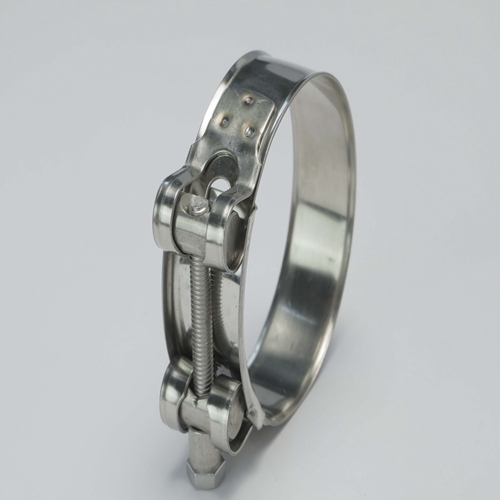- Phone:+86-17331948172 +86-0319-8862898
- E-mail: inquiry@puxingclamp.com
Nov . 20, 2024 11:15 Back to list
316l stainless steel strip suppliers
316L Stainless Steel Strip Suppliers A Comprehensive Guide
In the world of manufacturing and construction, stainless steel has become a vital commodity due to its impressive properties, including corrosion resistance, durability, and aesthetic appeal. Among the various grades of stainless steel, 316L stands out as a preferred choice for many industries, thanks to its low carbon content and enhanced resistance to pitting and crevice corrosion in chloride environments. Consequently, the demand for 316L stainless steel strips has surged, leading to an increase in suppliers globally. In this article, we will explore the key aspects of 316L stainless steel strips, their applications, and what to consider when choosing reliable suppliers.
What is 316L Stainless Steel?
316L stainless steel is part of the austenitic family of stainless steels. The L signifies its low carbon content, which minimizes the risk of sensitization during welding—a critical factor for maintaining corrosion resistance. This grade contains molybdenum, which enhances its resistance to chloride-induced corrosion, making it suitable for marine, chemical, and industrial applications. The alloy typically consists of 16-18% chromium, 10-14% nickel, and 2-3% molybdenum, resulting in a material that excels in extreme environments.
Applications of 316L Stainless Steel Strips
The versatility of 316L stainless steel strips makes them suitable for various applications across multiple industries
1. Chemical Processing Thanks to its resistance to acids and chlorides, 316L is widely used in the production of pipes, valves, and tanks in the chemical processing industry.
2. Marine Applications In environments exposed to seawater and other corrosive substances, 316L stainless steel strips are used in marine hardware, boat fittings, and offshore structures.
3. Pharmaceutical and Food Industries The non-reactive nature of 316L materials makes them ideal for sanitary applications, including food processing equipment and pharmaceutical machinery.
4. Architectural Applications 316L stainless steel strips are used in architectural designs and facades that require both aesthetics and durability, particularly in coastal areas.
316l stainless steel strip suppliers

Choosing the Right Supplier
When selecting a supplier for 316L stainless steel strips, several factors must be considered to ensure quality, reliability, and service
1. Quality Assurance Look for suppliers who adhere to international quality standards such as ISO 9001. Certifications indicate that the supplier implements rigorous quality control measures.
2. Material Certification Reliable suppliers provide certifications for the materials they sell. The most common certifications for stainless steel include ASTM A240, ASME SA240, and EN 10088. These documents assure you of the material's composition and mechanical properties.
3. Product Range A good supplier will offer an extensive range of stainless steel strips in various thicknesses, widths, and finishes. This variety ensures that you can find the specific product that meets your project requirements.
4. Customization Options Depending on your project needs, you may require customized solutions. Suppliers that provide cutting, slitting, and other processing services give you more flexibility.
5. Customer Support Strong customer support is essential for a smooth purchasing experience. Look for suppliers that offer technical assistance, quick response times, and efficient communication.
6. Delivery and Logistics The ability to deliver products promptly can significantly impact project timelines. Check the supplier’s shipping capabilities and ask about lead times to ensure they align with your schedule.
7. Pricing While pricing can be an important factor, it should not be the sole criterion. Focus on value rather than just cost to find a supplier who offers quality materials at a competitive price.
Conclusion
The growing demand for 316L stainless steel strips has led to an expanding market of suppliers worldwide. When selecting a supplier, consider factors such as quality assurance, product range, customization options, customer support, delivery logistics, and pricing. By choosing the right supplier, you can ensure that you receive high-quality materials that meet the demands of your specific application, ultimately leading to the success of your projects.
-
Premium 201 Stainless Steel Strip - Durable & Cost-Effective
NewsAug.23,2025
-
Precision High Quality Stainless Steel Strip Coils & Rolls
NewsAug.22,2025
-
Durable Adjustable Hose Clamps for Pipes & Radiators
NewsAug.21,2025
-
Heavy Duty Hose Clamps: Premium Stainless Steel & Adjustable
NewsAug.19,2025
-
Large Stainless Steel Adjustable American Type Hose Clamp - Hebei Pux Alloy Technology Co., Ltd
NewsAug.18,2025
-
Large Stainless Steel Adjustable Hose Clamp - Hebei Pux Alloy|Durable Corrosion Resistance&Adjustable Design
NewsAug.18,2025




